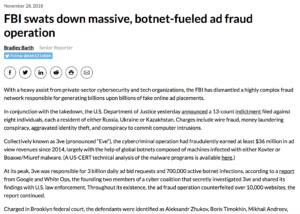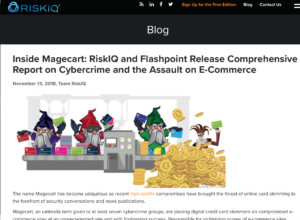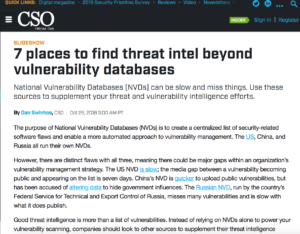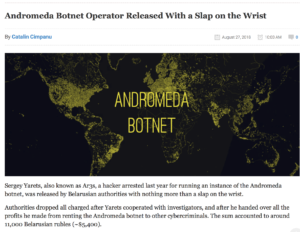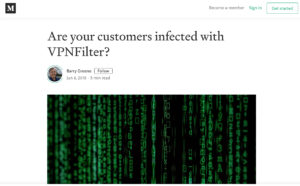FBI swats down massive, botnet-fueled ad fraud operation
With a heavy assist from private-sector cybersecurity and tech organizations, the FBI has dismantled a highly complex fraud network responsible for generating billions upon billions of fake online ad placements.In conjunction with the takedown, the U.S. Department of Justice yesterday announced a 13-count indictment filed against eight individuals, each a resident of either Russia, Ukraine or Kazakhstan. Charges include wire fraud, money laundering conspiracy, aggravated identity theft, and conspiracy to commit computer intrusions. Collectively known as 3ve (pronounced “Eve”), the cybercriminal operation had fraudulently earned at least $36 million in ad view revenues since 2014, largely with the help of global botnets composed of machines infected with either Kovter or Boaxxe/Miuref malware.


